Matrix Audio Element S Streamer Review
Read Time: Approx. 24 min.

Time to Add Another Element to the Audiophile Periodic Table
Streaming music. We all do it. But what if I told you there was a better way? When most people stream music you're thinking they cue up Spotify or Apple Music on their phone and jam away, right? Sure. There's a place for that I suppose. But if you're wanting better sound quality from your streaming experience, it might be time to upgrade to a standalone music streamer. We say time and time again, you'll find better quality when you start dividing up individual tasks for individual standalone devices. Standalone DACs, Streamers, Amplifiers, etc.
Matrix Audio makes some of the best music streamers on the market. I'll stand by their products any day of the week. They have an entire lineup they call the Element Series, offering top-tier performance and sound in some sleek-looking boxes. They're on their second generation of products now, and it's hard for me to say anything bad about them. That's why I had an Element X or X2 on my desk as my testing baseline unit until Chris stole it and I haven't seen it since.
The new Element S is the first music-only streamer from Matrix Audio with USB DAC outputs. It easily enables streaming audio functionality for your current audio system. The Element S is one of the easiest devices to incorporate streaming into your current system - simply plug it into your DAC and the rest of your audio chain and you're good to go. That's right - I'll mention the fact that there's no DAC in the streamer, but say more about why in a bit. Let's check out what makes the Element S one of the top music streamers under $2K., at $1,499.
[12/11/2023] Element S is Now Roon Certified
The Element S from Matrix Audio has passed rigorous testing and is now officially a Roon Ready device. It's now the 11th product from Matrix Audio that is Roon Certified. The certification status of the Element S will be synced from the Roon server gradually through the Roon software. If your Element S is still marked as "Uncertified" by Roon, please wait patiently as this process is rolled out.
Matrix Audio Element S Review: The Most FUTUREPROOF Streamer?

PROS
- Brings quality Element series streaming to any existing system
- MA Remote App experience
- Digital output selection
CONS
- Don't confuse this for an all-in-one. It is a streamer only, without a DAC or amp.
- Basic on-screen menu system
Design
The Element S takes its design cues from the rest of the Element series 2 lineup of music streamers. A simplistic and minimalist aluminum silver box - it's sleek and modern-looking, while the contrasting black fins on the sides act as a juxtaposed texture but more importantly, heat sinks, with effective heat dissipation given the design. The front of the Element S sports the great new touchscreen featured on the series 2. The Element S skips all the other knobs and buttons on the front like on the flagship Element X2 (which has a volume control knob, power button, and headphone output jacks). It's just the long touchscreen on the front with a pressure-sensitive power button integrated into the black glass panel on the left, and the play/pause, track skip, and settings buttons to the right of the screen. It's incredibly sexy looking and I really like the aesthetic that the Element series players provide.
On the top, you'll find the mirrored MA logo in the lower left-hand corner. That's it as far as branding and any stylings you'll find on the Element S. The really important stuff is on the back, with the inputs and outputs. From left to right you'll find:
- IISLVDS
- AES/EBU
- Coax
- RCA
- Optical
- USB DAC (Type-A)
- USB Audio
- USB/powered (Type-C)
- LAN
- Power
There are four large feet on the bottom of the device which minimizes sliding or external vibrations. It's not a particularly exciting device to look at, but it is one that looks great in just about every system. It's a universal design that is meant to blend in with whatever gear you already have, and the Element S is just as unassuming on the outside to get away with it. You won’t find some of the other bells and whistles on the Element S that you’ll find in others in the lineup like Bluetooth connectivity. The Element S is to be used exclusively with its digital output options. The real fun however is what's inside, so let's take a look at what's under the hood and just how the Element S sounds with the right configuration.
Sound
For our testing setup of the Matrix Audio Element S, we connected the music streamer to the Chord Hugo TT2 with Silver Dragon Digital Cables. I like that the TT2 is roughly the same size and dimensions as the Element S, though that is hardly why I chose to pair the two. The Chord TT2 is one of the best desktop DACs on the market, and for those who love a hyper-detailed and resolute listening experience, it's hard to recommend anything else at this price point ($6,725).
Connected to the Chord Hugo TT2 I paired the HIFIMAN HE1000 V2 Stealth Magnets and a Black Dragon Premium Cable.
The Element S is a streamer only, which means that you won't find the internals of a DAC or amplifier. That being said, you won't find any sound impressions for the Element S streamer on its own. You'll need to connect the streamer to an existing system that can handle headphones or speaker output. In this case, that is the Hugo TT2 for my setup. The Element S is my source, providing all the music I need from either an attached external storage drive or from the streaming integration itself through the MA Remote App. I'm controlling the app through my phone right now, and that's how I'm selecting the music I'm listening to.
It's not a plug-and-play system like a DAP or music player, but you do have to run through the same setup process as the other Element series streamers as they all use the same interface and MA Remote App for basic controls and integration. We'll take a further look at the MA Remote App and how to set it up later in the review.
This is normally where I'd talk about my sound impressions, but given the nature of the device, there aren't proper sound "impressions" of the Element S. Since its job is to stream the music and send it in all its purest form to whatever I'm connecting it to. I can only attest that the signal and data are clean - I have it running to the Chord TT2 via coax. That being said, the Element S doesn't have a signature - it just does. And what it does, it does extremely well. Bit perfect data transfers. No altering of the data whatsoever.
So if you're in the market for a standalone music streamer - then great. The Element S is one of our top choices. But how does it stack up to some others out there? Let's consider two streamers in particular here.
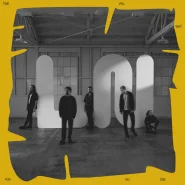
Hourglass
by Local Natives
(Time Will Wait for No One)
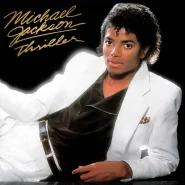
Thriller
by Michael Jackson
(Thriller)
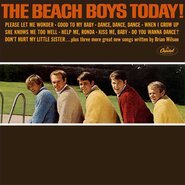
Dance, Dance, Dance
by Beach Boys
(The Beach Boys Today!)
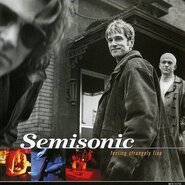
Singing In My Sleep
by Semisonic
(Feeling Strangely Fine)
Features
Screen: The Element S features a striking 3.46-inch touchscreen on the front face of the streamer. It presents a featured UI and interaction from Matrix Audio, allowing you to easily operate the device and accurately understand the device status. When the streaming music is playing, the metadata including album art, album name, track title, artist, etc., will also be displayed. It enables you to more comprehensively master music information and enjoy a better music-listening experience.
USB DAC: The USB DAC interface is a digital audio interface that surpasses traditional ports such as optical and coaxial, it feeds high-resolution PCM or DSD audio data to audio devices bit-perfectly. With this interface, DACs with USB input can be connected to element S, simply and quickly enabling online and local streaming audio for your existing audio system. The USB DAC interface has a 5V/1A ultra-low noise power output. The power supply is processed by a multi-stage ultra-low noise linear regulator and a power filter circuit before feeding to the USB device, to ensure a better performance of the device.
MA Player: MA player is a high-quality digital audio/streaming audio playback control system that is independently developed by Matrix Audio for its music streamers. With MA player, users can control audio devices in the network through mobile devices such as smartphones and tablets, and browse and play music from network drives or USB storage devices. In addition, MA player has integrated streaming technologies such as Roon Ready(Under certification test ), DLNA/UPnP, AirPlay 2, Spotify Connect, and TIDAL Connect, allowing you to experience high-resolution streaming audio on the local area network.
MA Remote Application: MA Remote App is available for iPhone, iPad, and Android phones. Through this app, you can browse and play music from your local music library, enjoy music from TIDAL, Qobuz, and HIGHRESAUDIO, plus listen to Internet radio from Matrix Audio devices. The configurations and firmware updates of the music streamer can also be done through the app.
USB Audio Port: When a computer, smartphone, or tablet is connected via USB Audio input, element S turns these devices into digital turntables. High-quality digital audio signals will be sent to back-end devices through this port. The digital audio output supports up to 32Bit/768kHz PCM and 1Bit/DSD512. HID is supported through a USB Audio connection as well, which allows you to control the playback of the player software through the touch key on the device.
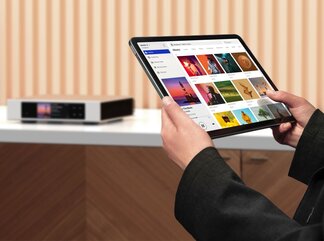
IIS-LVDS Output: The IIS-LVDS output of element S supports up to 32Bit/768kHz PCM and 1Bit/DSD512 digital audio. In order to be compatible with more DACs, Matrix Audio provided 4 kinds of IIS-LVDS pin definition and 2 MCLK modes on this port, which can be configured through MA Remote App. Furthermore, the IIS-LVDS is applied electrical isolation design, the ground wire of the front and back end devices are separated, to avoid the noises transporting via the ground wire.
MA Player and Remote App
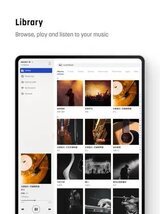
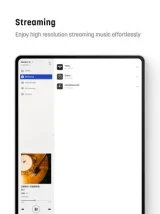
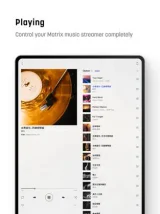
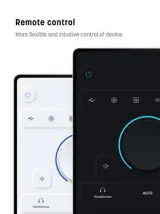
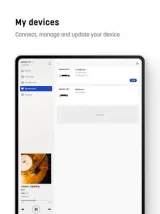
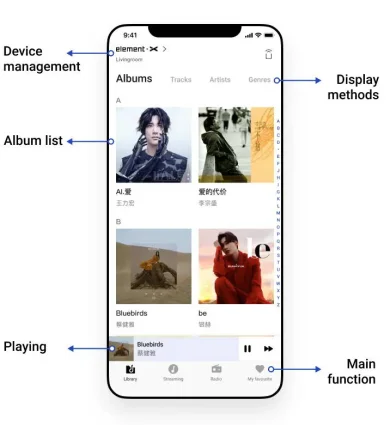
Specs: Controller app / MA Remote App (Local Playback)
- Format Supported: MP3 , WMA , WAV , AIF, AIFC, AIFF, AAC, FLAC, OGG, APE, ALAC, M4A, DSF, DFF, CUE
- PCM Sampling Rate: PCM 16-24Bit 44.1kHz, 48kHz, 88.2kHz, 96kHz, 176.4kHz, 192kHz, 352.8kHz, 384kHz, 705.6kHz, 768kHz
- DSD Sampling Rate: 2.8MHz, 5.6MHz, 11.2MHz, 22.4MHz
- Roon Ready: (Under certification test )
- PCM Sampling Rate: PCM 16-24 Bit /44.1kHz, 48kHz, 88.2kHz, 96kHz, 176.4kHz, 192kHz, 352.8kHz, 384kHz, 705.6kHz, 768kHz
- DSD Sampling Rate: DSD 2.8MHz, 5.6MHz, 11.2MHz, 22.4MHz
- AirPlay 2: The audio specs depend on the service provider
- DLNA/UPnP: The audio specs depend on the service provider
- TIDAL Connect: The audio specs depend on the service provider
- Spotify Connect: The audio specs depend on the service provider
- vTuner: The audio specs depend on the service provider
- Radio Paradise: The audio specs depend on the service provider
- HIGHRESAUDIO: The audio specs depend on the service provider
Using the Remote Interface
The real workings of the Element S shine when using the companion control application for the streamer, allowing you access to limitless music (if you have the streaming services for it). The box allows you to connect an external storage device for local music storage that you can also access from the remote app, and in conjunction with paid streaming services, you literally have everything available to you at your fingertips. The Remote App is available for both Android and iOS, so no matter what platform or device you prefer, you can control your Element S from your favorite mobile device as well.
Setting Up Your Element S & Configuration
If setting up your device for a wireless connection, place your Element S in an open area of your home or in a location where the device will not receive interference from alternative wireless sources. For the most stable connection, we recommend setting up your Element S via a wired connection (LAN). If you are setting up and WLAN connection, please install the antenna on the back of the Ethernet console in an upright position. If setting up a LAN connection, place an Ethernet cable into the jack located in the rear, right-hand corner of the Element console. Connect the Element S to your ISP device.
Reference the following video on how to set up your Element S to either a wired or wireless network: https://youtu.be/zOsoZR0Da8c
Regardless of the connection configuration, download the Matrix Audio Remote application to control your Element S. Download Matrix Audio Remote HERE.
Once the Matrix Audio Remote is downloaded, plug in your Element S into the power supply, power it on, and wait for it to be recognized by the Matrix Audio Remote application. There are three ways to connect and configure your device in the MA remote application: WLAN, Automatic, and Manual.
Select WLAN configuration, if you want to connect your Element S streamer to a wireless network: https://youtu.be/FKh6Yz1QMjo Select the Automatic connection, if your Element S has been connected to a LAN and you wish to add and search for devices automatically: https://youtu.be/rkXX9O0uxGk Select the Manual connection, if your device is already connected and you’d like to manually enter the device’s IP address: https://youtu.be/cxW9sSGTTRg
Be sure to check out our Element Series setup guides for more information on how to set up your Element S Music Streamer. LINKS HERE: https://www.moon-audio.com/how-to-setup-your-matrix-audio-element-x
A new generation Element series
How to: set up WLAN connection
How to: set up LAN connection
How to: add MA Remote App
How To: Firmware Updates
How To: Playback music from USB drive
How to: Playback music from a network drive
How to: Change device configuration in MA Remote
Roon Ready
The Element S is now officially Roon Certified! Now you can enjoy your music from Roon through the Element S, and start your new journey of high quality streaming audio. Remember to keep your Roon software up to date since the rollout for the certification is staggered in release.
The Element S from Matrix Audio has passed rigorous testing and is now officially a Roon Ready device. It's now the 11th product from Matrix Audio that is Roon Certified. The certification status of the Element S will be synced from the Roon server gradually through the Roon software. If your Element S is still marked as "Uncertified" by Roon, please wait patiently as this process is rolled out.
Digital Input Selection
"One of the true highlights of the Matrix Element S streamer is the plethora of digital output options. Everyone at Moon Audio - myself included - is excited about the 'i-squared-S' or 'IIS' digital audio connection. IIS is a native data stream format. It provides a signal without any sort of outside influence. The easiest way to explain this digital stream is to think about a CD player. The data that is pulled off of the CD disk and sent onto the decoding DAC chip is in the format of IIS. There is no conversion or changes made to this data format.
With a CD player that has numerous digital outputs such as AES, SPDIF either Coax or Toslink, all of these formats require a conversion from IIS. This standard was created back in 1986 when CD players became all the rage. But until recently it was only seen as a digital transfer format on the highest-priced CD transports and Dacs. This never made sense to Drew due to the fact no conversion was necessary. However, he also found if the cabling was not correctly done then it could cause serious consequences to the clock vs data stream between the devices. Clocking circuits and cabling have made great strides since the 80s and now utilizing this format is much easier. The connection of choice, thanks in part to PS Audio, has become the HDMI connection. While I2S signals at the start only require 4 data paths, the HDMI connection adds additional connection points to provide for additional circuits to make sure the raw data of I2S is protected and delivered properly. The only negative to I2S is that not all manufacturers have adopted the same pin-out configuration for HDMI connection. And there are no HDMI cable converters to make the switch between brands. We're glad Matrix has chosen the pin-out that PS Audio chose to use when bringing this format back to the mainstream. The I2S format has separate clocks and data and lower jitter and better performance if handled properly.
The AES and SPDIF Coax RCA connections are either converted from I2S to their associated formats or in most applications these are pulled from the DAC chip. The Dac Chip usually offers not just analog output conversion but can also provide digital outputs that have been reclocked and are either in the output impedance format of 110ohms for AES or 75ohms for COAX RCA. The way you convert one of these formats to the other is by the use of a small impedance transformer. If giving either format typically AES is almost always going to sound better especially if it was the format that did not have the transformer in the path.
A Toslink SPDIF connection is going to require a conversion from an electrical signal to a light signal stream. The best thing about Toslink is that it totally truncates the electrical connection between devices, therefore, taking any sort of potential noise 100% out of the equation. The negative to Toslink is there have been no strides in chip technology to really make them sound good and of the 4 formats talked about so far it is our least favorite in terms of performance.
The last digital connection is USB. Of the other 4 connections, the USB connection is the most flexible. Whether you want to pass PCM or DSD, Native DSD or DOP DSD and just about every bit of depth and resolution, the USB connection can do them all. However, whether the USB connection sounds as good or worse than any of the other formats we talked about really comes down to the USB conversion circuit and path utilized in the upstream and downstream devices. There is so much more that can go wrong here in terms of sound quality that it takes a little more A-B testing on your part to determine whether this format sounds better to your ears. We can assure you that the USB digital output on the Element S is first rate and you will be happy with it but our recommendation is to utilize the I2S connection if you have a Dac that will support it for optimal sound quality." - Drew Baird, P.E.
Matrix Audio Element i2 Streamer
The obvious first comparison to consider here is the Element i2 from Matrix Audio. What's the difference between the two you ask? The Element i2 is priced just above the Element S, and right off the bat you'll notice a few additional buttons, knobs, and whatnot. The i2 is a music streaming just like the S, but it comes equipped with an internal DAC and a fully-balanced headphone amplifier. That being said, the i2 can be used as a complete system - just plug in your headphones and you're good to go. The Element S on the other hand is just the streaming functionality of the i2. No headphone jacks. No amplifier. No DAC. You'll need to connect the Element S to a standalone DAC or DAC/Amp combo in order to output audio. The ES9038Q2M DAC chip in the Element i2 is a superb sounding chipset, and combined with the fully balanced headphone amplifier, if you're looking for a standalone unit with streaming capability, then the price increase (not even $200 more!) also very much justifies a strong recommendation from us for the Element i2. The decision comes down to what you need in your system. If you already love your DAC and amplifier and just want to add streaming - then by all means go for the Element S. You can't lose.
Bluesound NODE High-Res Streamer
The Node from Bluesound is another alternative to consider when looking at music streamers, but it's aimed more at the entry-level music enthusiast. Bluesound has its own proprietary streaming app, called BluOS, that works realistically in much the same way as MA Remote. You have access to your streaming services as integrated into the app, and anything that's plugged into the Node via external local storage. The Node however is limited when compared to the extensive selection of digital outputs that the Element S has. The Node does have an internal DAC and analog outs, which the Element S lacks - meaning you could connect it to a pair of active bookshelf speakers for loudspeaker integration if you wanted. That combined with the headphone jack on the front of the Node streamer means that there is also an integrated amplifier, another thing that the Element S does not have. The Node, like the Element i2, is a complete system in this regard, but the Node is more aimed at basic streaming for the beginner, whereas the Element i2 is more of an enthusiast streamer, with better quality specs and sound. Bluesound has also released an anniversary edition of the Node, called the Node X, so be sure to check out our review on that! If you're wanting basic streaming with a headphone jack then you can't get mad at the Node for what it offers for the price. It's a great product and value. If you want better quality streaming with higher-end specs and you don't need an amp or DAC, then go for the Element S.
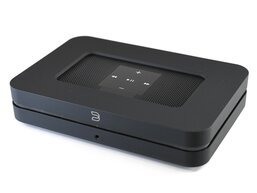
Dragon Cables
For our testing setup of the Matrix Audio Element S, we connected the music streamer to the Chord Hugo TT2 with Silver Dragon Digital Cables. Connected to the Chord Hugo TT2 I paired the HIFIMAN HE1000 V2 Stealth Magnets and a Black Dragon Premium Cable.
The cable pairing is specific to this setup. The Element S and the Hugo TT2 have amazing detail retrieval and lean towards the analytical side in my opinion. To help balance that, I added the Black Dragon to the HE1000 to boost some of the low end - providing more body and tightening up the lower frequencies. Of course, whatever you decide to pair with the Element S in your system is special to you. We'll be more than happy to provide you with a personalized recommendation if you want to incorporate the Element S streamer into your Hi-Fi system.

Verdict
The Element S from Matrix Audio fills in an interesting gap in the Element lineup of products. Equipped with a premium selection of Digital Outputs, this streamer is unlike the rest in that it prioritizes the digital connection to the DAC rather than adding the DAC and amp circuit into the design. It's meant to deliver pristine and uber-clean digital data to your DAC or connected device. For purists or those who just want a high-end music streamer to integrate into their current system, then there's no better streamer out there at this price.
Look, if you like your existing DAC sound, amplifier, etc, and you're the type of audiophile who likes to piece their system together based on the signature of individual components, then the Element S will fill that hole for those looking for a quality music streamer at the under-$2,000 price point. If you want a more integrated unit, then consider the Element i2 - since it has an internal DAC and headphone amplifier built-in, all you'll need to do is plug in some headphones and you're good to go.
The Element S brings the outstanding MA Remote control app and interface to any system - it’s incredibly easy and intuitive to use, and it integrates your existing streaming services, connected external local storage, and more into one clean interactive experience on your favorite Android or iOS device. If you're considering one of the best standalone streamers out there with control app integration and digital outs then look no further, the Element S will give you just about everything you need.
Featured Products
Matrix Audio Element S Review: The Most FUTUREPROOF Streamer?
Music Streaming 101: Understanding the Basics
7 Hi-Res Music Streamers We Love 2022
What's in the Box
- Matrix Audio Element S Streamer
- Power Cable
- Quick start guide
- Warranty
Specifications
Hardware Platform: CPU NXP i.MX 6Quad Cortex-A9
Digital Input: USB Audio PCM: 16-32Bit / 44.1kHz, 48kHz, 88.2kHz, 96kHz, 176.4kHz, 192kHz, 352.8kHz, 384kHz, 705.6kHz, 768kHz DSD: 2.8MHz, 5.6MHz, 11.2MHz (DoP) DSD: 2.8MHz, 5.6MHz, 11.2MHz, 22.4MHz (Native)
Digital Output: COAXIAL, OPTICAL & AES/EBU PCM: 16-24Bit / 44.1kHz, 48kHz, 88.2kHz, 96kHz, 176.4kHz, 192kHz DSD: 2.8MHz (DoP) IIS LVDS PCM: 16-32Bit / 44.1kHz, 48kHz, 88.2kHz, 96kHz, 176.4kHz, 192kHz, 352.8kHz, 384kHz, 705.6kHz, 768kHz DSD: 2.8MHz, 5.6MHz, 11.2MHz (DoP) DSD: 2.8MHz, 5.6MHz, 11.2MHz, 22.4MHz (Native)
USB DAC: The audio specs depend on the external DAC. This port provides up to 5V/1A low noise power to the external USB DACs.
Network: LAN: 10/100/1000 Mbps, WLAN: 2.4 GHz / 5 GHz
USB Type C: The USB Type C port provides a maximum power of 5V/1.5A. The USB port works with devices which conform to the USB mass storage standard and supports FAT, FAT32, exFAT, and NTFS file formats, but is not guaranteed to be compatible with all storage devices.
MA player
Controller app: MA Remote App
Local Playback Format Supported: MP3, WMA, WAV, AIF, AIFC, AIFF, AAC, FLAC, OGG, APE, ALAC, M4A, DSF, DFF, CUE
PCM Sampling Rate: PCM 16-24Bit 44.1kHz, 48kHz, 88.2kHz, 96kHz, 176.4kHz, 192kHz, 352.8kHz, 384kHz, 705.6kHz, 768kHz
DSD Sampling Rate: 2.8MHz, 5.6MHz, 11.2MHz, 22.4MHz
AirPlay 2: The audio specs depend on the service provider
DLNA/UPnP: The audio specs depend on the service provider
TIDAL Connect: The audio specs depend on the service provider
Spotify Connect: The audio specs depend on the service provider
vTuner: The audio specs depend on the service provider
Radio Paradise: The audio specs depend on the service provider
HIGHRESAUDIO: The audio specs depend on the service provider
Power
Power Voltage: AC 100V-240V 50/60Hz Standby Power Consumption: < 5W Maximum Power Consumption: < 30W
Weight & Size
Weight: 2.4kg (5.29 pounds) Size: Width: 240 mm (9.45 inches), Depth: 245 mm (9.65 inches), Height: 58 mm (2.28 inches)
Accessory: Power cable x1, Quick start guide x1, Warranty card x1







































